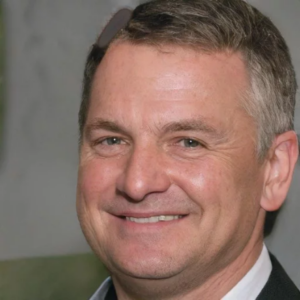Medicare B 2026: Changes, Costs, and Enrollment Tips
Medicare B 2026 is essential for millions of Americans, providing vital medical services like outpatient care, preventive services, and some home health care. Understanding Medicare B is crucial for beneficiaries to make informed healthcare decisions.
Understanding Medicare B in 2026
Medicare B continues to evolve, adapting to changes in healthcare needs and policies. Key aspects include coverage, costs, and eligibility requirements.
Coverage Under Medicare B
- Outpatient Services: Covers a variety of outpatient services, including doctor visits and lab tests, ensuring beneficiaries maintain their health.
- Preventive Services: Focuses on preventive care, covering annual wellness visits and vaccinations to promote early detection of health issues.
- Durable Medical Equipment (DME): Provides coverage for necessary equipment like wheelchairs and oxygen supplies, aiding daily living.
Costs Associated with Medicare B
- Premiums: The standard monthly premium is expected to remain affordable, with adjustments based on income.
- Deductibles and Coinsurance: Beneficiaries should understand these costs, which can vary yearly, to manage healthcare expenses effectively.
- Financial Assistance Programs: Programs exist to help low-income beneficiaries cover costs, ensuring access to necessary services.
Eligibility for Medicare B
- Age Requirement: Generally, individuals qualify at age 65, though those under 65 may qualify due to disabilities.
- Enrollment Periods: Awareness of enrollment periods is crucial to avoid penalties.
- Special Enrollment Periods: Certain life events may allow for enrollment outside standard timelines.
Call the official Medicare helpline at 1-800-MEDICARE (1-800-633-4227) to ask your questions or get more information.
Key Changes in Coverage for 2026
Medicare B 2026 is poised to introduce significant changes that will affect millions of beneficiaries in the U.S. This part of the Medicare program covers essential medical services, including outpatient care and preventive services. Staying informed about the updates for 2026 is vital for beneficiaries to make educated healthcare and financial decisions.
Expanded Preventive Services
- New Screenings and Vaccinations: In 2026, Medicare B will offer additional preventive services, including expanded coverage for cancer screenings and vaccinations, promoting early detection of health issues.
- Increased Frequency: Beneficiaries may receive annual wellness visits and chronic condition screenings at no extra cost, reflecting a focus on preventive care that can improve health outcomes and reduce long-term costs.
Cost Adjustments
- Premium Changes: Beneficiaries should anticipate potential increases in monthly premiums and annual deductibles due to healthcare inflation and service expansions, making it essential to budget accordingly.
Telehealth Services Expansion
- Broader Access: Medicare B 2026 will enhance telehealth services, allowing beneficiaries to access care from home, including virtual visits with healthcare providers, which is especially beneficial for those in rural areas or with mobility issues.
Cost Implications for Medicare B Beneficiaries
Medicare B 2026 is set to introduce significant changes affecting millions of beneficiaries. As a vital part of the Medicare program, it covers essential medical services like doctor visits, outpatient care, and preventive services. Understanding the cost implications for beneficiaries in 2026 is crucial for effective financial planning.
Looking ahead to Medicare B 2026, beneficiaries should be aware of potential changes in premiums, deductibles, and out-of-pocket expenses that could impact their budgets.
Premiums and Deductibles
- Projected Premium Increases: The standard monthly premium for Medicare Part B is expected to rise in 2026, affecting monthly budgets.
- Annual Deductible Changes: The annual deductible may also increase, requiring beneficiaries to pay more out-of-pocket before coverage begins.
Out-of-Pocket Costs
- Cost Sharing: Beneficiaries are responsible for 20% of the Medicare-approved amount for most services after meeting their deductible.
- Potential Additional Costs: Some services may not be fully covered, leading to additional out-of-pocket expenses.
Preventive Services and Coverage
- Expanded Preventive Services: Medicare B emphasizes preventive care, often at no cost, helping beneficiaries avoid serious health issues.
- Awareness of Coverage Limits: Beneficiaries should be aware of limits on certain preventive services to make informed healthcare decisions.
Eligibility Criteria for Medicare B in 2026
Medicare B 2026 is a vital component of the Medicare program, offering essential healthcare coverage to millions of Americans. As we approach 2026, understanding the eligibility criteria for Medicare B is crucial for those nearing retirement or already eligible. This section outlines who qualifies for Medicare B and what you need to know to secure your coverage.
Age Requirement
- Individuals must be at least 65 years old to qualify for Medicare B.
- Those under 65 may qualify if they have a qualifying disability or conditions like End-Stage Renal Disease (ESRD) or Amyotrophic Lateral Sclerosis (ALS).
Citizenship and Residency
- You must be a U.S. citizen or a legal resident for at least five years.
- Residency in the U.S. for at least six months each year is required.
Enrollment Periods
- Initial Enrollment Period (IEP): A seven-month window starting three months before you turn 65.
- General Enrollment Period (GEP): Runs from January 1 to March 31 for those who miss the IEP.
Premium Payments
- Most do not pay a premium if they have paid Medicare taxes for 10 years.
- Those who haven’t may face varying monthly premiums based on income.
Understanding these criteria is essential for effective healthcare planning.
Impact of Medicare B on Preventive Services
Medicare B 2026 is set to significantly influence preventive healthcare services for millions of Americans. As part of the Medicare program, it emphasizes outpatient care, focusing on early detection of health issues. Understanding its impact is vital for beneficiaries aiming to optimize their healthcare benefits as they age.
The Role of Medicare B in Preventive Services
Comprehensive Coverage
Medicare B 2026 provides a variety of preventive services at no cost, including annual wellness visits, screenings, and vaccinations.
- Annual Wellness Visits: These visits help healthcare providers assess health and create personalized prevention plans.
- Screenings: Coverage includes screenings for conditions like cancer and diabetes, facilitating early detection.
- Vaccinations: Immunizations, such as flu shots, are included to prevent serious illnesses.
Increased Access to Care
Beneficiaries enjoy greater access to preventive services, promoting healthier populations.
- No Out-of-Pocket Costs: Most services are free, encouraging utilization.
- Awareness Campaigns: Medicare educates beneficiaries about available services, boosting participation.
Impact on Health Outcomes
The services under Medicare B 2026 can greatly enhance health outcomes for older adults, leading to reduced hospitalizations, improved quality of life, and long-term cost savings.
In summary, Medicare B 2026 aims to improve the accessibility and effectiveness of preventive services, empowering beneficiaries to manage their health proactively.
Future Projections for Medicare B and Beneficiary Trends
Medicare B 2026 is set to significantly impact healthcare for millions of Americans, covering essential services like outpatient care and preventive services. Understanding its future projections is crucial for beneficiaries, policymakers, and healthcare providers, as it will affect access and affordability in the coming years.
Looking ahead, several trends are emerging that will influence Medicare B 2026.
Demographic Shifts
- Aging Population: The number of Medicare beneficiaries is expected to rise significantly due to the aging baby boomer generation, with an estimated increase of over 10 million beneficiaries by 2026.
- Diverse Needs: The diverse population will require tailored healthcare services to meet varying needs.
Cost Trends
- Premium Increases: Beneficiaries may face rising premiums, projected to increase by 5-10% annually.
- Out-of-Pocket Expenses: Average out-of-pocket spending for Medicare B services is also expected to rise, impacting affordability for seniors.
Technological Advancements
- Telehealth Services: Continued expansion of telehealth will enhance access to care, especially for those with mobility issues.
- Health Information Technology: Improved health IT systems will facilitate better care coordination and patient engagement, making healthcare delivery under Medicare B 2026 more efficient.
FAQs: Medicare B 2026
Q: What will Medicare Part B cost in 2026?
A: The exact cost for Medicare Part B in 2026 hasn’t been finalized yet but is expected to increase slightly from 2025 due to rising healthcare expenses.
Q: What are the changes for Medicare in 2026?
A: Changes for Medicare in 2026 may include updated premiums, cost-sharing adjustments, and policy updates announced by CMS closer to the end of 2025.
Q: Does CalPERS pay for Medicare Part B?
A: No, CalPERS does not pay Medicare Part B premiums. Retirees are responsible for these costs, although CalPERS may cover other medical expenses depending on the plan.
Q: How much will Medicare Part B premiums be in 2025?
A: The standard Medicare Part B premium in 2025 is $174.70 per month, with higher-income beneficiaries paying additional Income-Related Monthly Adjustment Amount (IRMAA) fees.
Final Thoughts
While Medicare Part B premiums for 2026 are not yet confirmed, beneficiaries should anticipate a moderate increase. Understanding your responsibilities, including CalPERS’ role, can help you better plan for healthcare costs in retirement.
Plans change. So can your coverage. Get your free Medicare quote now at NewMedicare.com or call 📞 (833) 203-6742






